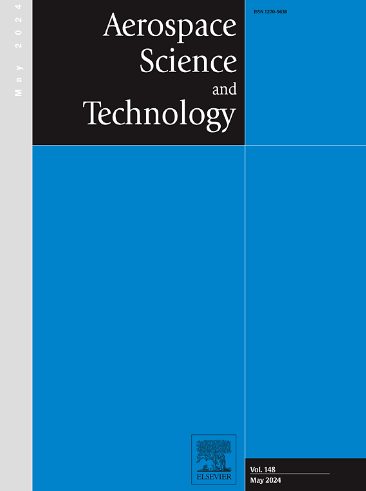在不同雷诺数条件下利用叶片末端槽对三级压缩机的气流分离进行被动控制
IF 5
1区 工程技术
Q1 ENGINEERING, AEROSPACE
引用次数: 0
摘要
无人驾驶飞行器(UAV)的飞行高度超过 20 千米,低雷诺数(Re)对无人驾驶飞行器的航空发动机影响很大。事实证明,在常规雷诺数下,叶片末端槽技术是控制叶片末端区域角分离流的有效方法。为了验证该技术在低雷诺数条件下的有效性,我们将叶片末端槽技术应用于高飞行高度条件下的三级压缩机。揭示了不同雷诺数下叶片末端槽的控制效果和机理,为后续低雷诺数条件下三级压缩机的实验奠定了基础。结果表明,20 千米(低 Re 值)条件下叶片末端区域附近的损耗大于 0 千米(高 Re 值)条件下的损耗。采用叶片末端槽技术可以在不降低效率的情况下显著抑制转角分离,扩大三级压缩机的失速裕度。叶片末端狭缝产生的自适应射流能有效地将低动量流体置换到吸气面附近,并限制其沿叶片跨向移动。此外,第三级定子的单一叶片末端开槽方案和每个定子的组合叶片末端开槽方案在 20 千米条件下可分别增加 3.52% 和 6.81% 的失速裕度。这些发现强调了叶片末端开槽作为优化压缩机在低 Re 条件下性能的控制机制的潜力。本文章由计算机程序翻译,如有差异,请以英文原文为准。
Passive control of flow separation with blade-end slots for a three-stage compressor at different Reynolds numbers
The unmanned aerial vehicles (UAVs) operate at flight altitudes exceeding 20 kilometers, where the effect of low Reynolds number () on the aero-engine of UAVs is significant. The blade-end slots technique is proved to be an effective method to control the corner separation flow in the blade end regions under conventional Reynolds number. To verify the effectiveness of this technique under low conditions, the blade-end slots technique is applied to a three-stage compressor under high flight altitude conditions. The control effect and mechanism of the blade-end slots under different are revealed to lay a foundation for the subsequent experiments of the three-stage compressor at low condition. Results show that the loss near the blade-end region under 20 km (low ) condition is larger than that under 0 km (high ) condition. The employment of the blade-end slots technique can significantly suppress the corner separation and widen the stall margin of the three-stage compressor without reducing the efficiency. The self-adaptive jet generated by blade-end slots effectively displaces low-momentum fluid near the suction surface and restricts its spanwise migration along the blade. Furthermore, the single blade-end slotted scheme for the third-stage stator and the combined blade-end slotted scheme for each stator can increase the stall margin by 3.52% and 6.81% under 20 km condition, respectively. These findings underscore the potential of blade-end slots as a control mechanism to optimize compressor performance under low conditions.
求助全文
通过发布文献求助,成功后即可免费获取论文全文。
去求助
来源期刊

Aerospace Science and Technology
工程技术-工程:宇航
CiteScore
10.30
自引率
28.60%
发文量
654
审稿时长
54 days
期刊介绍:
Aerospace Science and Technology publishes articles of outstanding scientific quality. Each article is reviewed by two referees. The journal welcomes papers from a wide range of countries. This journal publishes original papers, review articles and short communications related to all fields of aerospace research, fundamental and applied, potential applications of which are clearly related to:
• The design and the manufacture of aircraft, helicopters, missiles, launchers and satellites
• The control of their environment
• The study of various systems they are involved in, as supports or as targets.
Authors are invited to submit papers on new advances in the following topics to aerospace applications:
• Fluid dynamics
• Energetics and propulsion
• Materials and structures
• Flight mechanics
• Navigation, guidance and control
• Acoustics
• Optics
• Electromagnetism and radar
• Signal and image processing
• Information processing
• Data fusion
• Decision aid
• Human behaviour
• Robotics and intelligent systems
• Complex system engineering.
Etc.
 求助内容:
求助内容: 应助结果提醒方式:
应助结果提醒方式:


